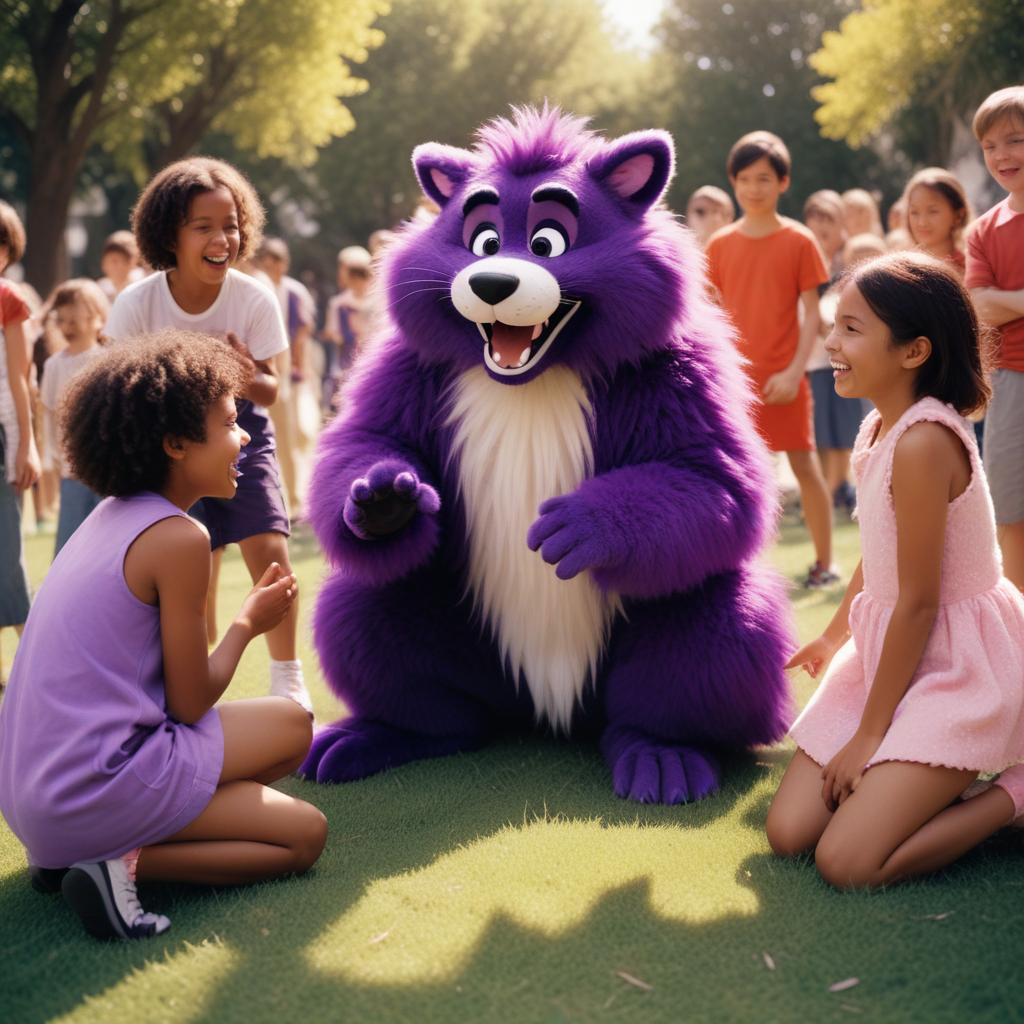In the world of modern marketing, narratives have become an essential tool for creating connections between a brand and its audience. Marketing is no longer limited to simply listing product characteristics — it is developing in the direction of an emotional connection with the consumer. At the heart of this connection are the stories through which brands communicate their values, vision, and mission. Using narratives, companies not only stand out from the competition, but also strengthen long-term relationships with customers. Let's look at exactly how narratives shape the perception and values of brands and why they are so important in modern marketing.

Why do brands need stories?
People tend to perceive and remember information through stories. For centuries, culture, traditions, and values have been passed down from generation to generation through stories. Stories create an emotional response, affect people's feelings, and help make complex ideas clearer and more accessible. In marketing, this mechanism works on the same principle: when brands tell a story, they evoke associations and emotions in the audience that are easier to remember.
Stories help brands move beyond a simple product or service description and make it part of a larger context.
This can be a personal story of the brand founder, examples from the life of consumers, or even fictional stories,
which reveal the company's internal values. An example is Apple, which uses narratives about creativity, innovation, and individualism. In their advertising, consumers don't just see the product — they feel like they are part of a cultural movement that is making the world a better place through technology.
Emotional connection through narratives
Emotions play a key role in decision-making. Research shows that emotions often influence consumer behavior more strongly than logic or rational reasoning. Therefore, marketers try not only to demonstrate the advantages of their product, but also to evoke an emotional response from the audience. Stories are the perfect tool for this.
An example is Nike. Through its advertising campaigns, such as “Just Do It,” Nike tells stories about overcoming yourself, achieving goals, and striving for success. These stories move people, inspire them to move forward, and the brand is associated with motivation and determination in the minds of consumers.
Narratives also create a personal sense of belonging. When a brand tells a story that resonates with the consumer's experience, there is a sense of community and mutual understanding. The brand seems to say “" We understand what you're going through,” which strengthens the emotional connection between the company and the customer.

Brand stories and identity
Every successful brand has its own unique identity — a set of characteristics, values, and attributes that set it apart from its competitors. Stories help shape and maintain this identity by conveying key messages to the audience about what the brand is and why it exists.
Take, for example, the company Patagonia, which is engaged in the production of clothing for outdoor activities. Their narrative is centered around sustainability and environmental protection. Through its marketing campaigns, Patagonia tells stories about wildlife conservation, responsible consumption, and combating climate change. Through these narratives, the brand shapes its identity as a company that cares about the planet and attracts customers who share these values.
Stories also help brands adapt to changing social trends. When society starts to talk more about inclusivity, sustainability, or social justice, brands can use narratives to demonstrate their position on these issues. For example, Dove has been successfully promoting the idea of natural beauty for many years through the “Real Beauty " campaign, which challenges stereotypes about appearance and helps women feel confident regardless of their appearance.

How brands use narratives to shape their values
Brand values are what make a company recognizable and close to consumers. Through narratives, brands shape these values and link them to their products and services. This can be not only an emotional connection, but also the development of a certain philosophy that customers accept as their own.
A good example is The North Face, which uses stories about adventure and the desire to conquer new horizons. Through stories about climbing peaks, exploring uncharted territories.
it conveys the idea not only about the functionality of its products, but also about the importance of constant personal growth and expanding the boundaries of what is possible. Narratives help brands demonstrate what values they support, how they influence the world, and what they are willing to offer their customers. This is important in the context of increasing awareness of consumers, who are increasingly choosing brands not only for the quality of their products, but also for how their activities affect society.
How to build an effective narrative
Creating a powerful narrative requires attention to detail and understanding of your audience. It is important that the story is not made up solely for the purpose of selling the product — it must be sincere and true, otherwise consumers will quickly recognize the fake.
Here are some key aspects that will help brands create effective narratives::
Authenticity. People value honesty. Stories based on real events generate more trust and emotional response. A brand's success story, difficulties, or even failures can become a powerful narrative if it is presented sincerely.
Understanding the audience. It is important to tell stories that are close and interesting to your target audience. This means that brands need to study their customers, their interests, pains, and aspirations.
A single line on all platforms. The brand narrative must be consistent across all communication channels, from advertising and social media to packaging and user experience. This will help you create a holistic brand experience.
Values come first. The brand's history should be linked to its core values. This helps build long-term customer loyalty and strengthen the brand's position in the market.

Types of narratives in marketing
Narratives can take many forms depending on the brand's goals and needs. Let's look at some of the most common types::
Brand Creation Narrative. The history of the brand's origin, which tells about the difficulties and successes on the way to its creation. Such stories show the personality and passion of the founders, adding a human dimension to the business. An example is the story of Warby Parker, which tells how the founders wanted to make high-quality glasses accessible to everyone.
Product History. This narrative focuses on the process of creating a product, its unique characteristics, and the way it changes people's lives. Tesla, for example, uses stories about its innovative developments to show the future of transportation and environmental responsibility.
Customer History. Sometimes brands tell their customers ' stories, which is a powerful way to show how a product or service really helps people. For example, GoPro shares user-generated videos of extreme sports, focusing on the real-life experiences and emotions of the people who use their camera.
Social and cultural narratives. These stories are aimed at demonstrating the brand's position on important issues such as inclusivity, protecting nature, and supporting equality and social justice. The Ben & Jerry's brand actively tells stories about social responsibility, which strengthens its reputation as a company that cares about the world.
Examples of successful use of narratives
Brand stories become part of their long-term strategy and create strong connections with consumers. Let's take a look at some well-known examples of brands that masterfully use narratives:
Airbnb. This brand doesn't just offer rental housing — it tells the stories of travelers and hosts, creating a global network of mutual assistance and friendship. Airbnb uses narratives about new acquaintances and cultural exchanges to tell how their platform is changing the travel experience.
Coca-Cola. Coca-Cola's marketing campaigns have been built around narratives of happiness, togetherness, and friendship for many years. For example, the brand's Christmas campaigns with colorful images of family holidays and warm communication have created a recognizable and emotionally charged story that people associate with this drink.
Red Bull. This brand, which is associated with extreme sports and adventure, uses narratives about overcoming the limits of human capabilities. Their famous collaboration with Felix Baumgartner, who made a stratospheric leap, is a powerful example of how a story about courage and achieving the impossible can strengthen a brand's image.
How narratives affect a brand's reputation
A brand's reputation is the overall public perception of it. And narratives play a key role in shaping and maintaining this perception. It is important that the stories that the brand tells reflect its actual actions, as the audience quickly picks up inconsistencies between words and deeds.
Narratives help build trust. People are more likely to trust brands that are open about their values and actions. This is especially important in an era when consumers tend to buy from companies whose principles they share. For example, transparent stories about the supply chain or environmental initiatives can significantly increase brand credibility.
Narratives can increase loyalty. When a brand consistently tells stories that resonate with its audience, it helps build emotional connection and loyalty. Loyal customers don't just buy a product — they become its advocates, sharing brand stories with other people.

Technologies and narratives: how digital tools help tell stories
The digital age has opened up new opportunities for marketers to create and distribute narratives. With the development of social media, video platforms, virtual and augmented reality, brands can experiment with different formats in order to tell their story in the most interactive and exciting way.
Social Media. Platforms like Instagram, Facebook, TikTok, and Twitter allow brands to share their stories through short videos, photos, and text posts, engaging with their audience in real time. These media outlets provide an opportunity not just to tell a story, but also to engage users, inviting them to become a part of it.
Video content. The video format is one of the most powerful tools for conveying emotions and stories. For example, many brands use short documentaries or commercials with a vivid narrative to reveal the essence of the narrative in a few minutes. YouTube and other video platforms allow you to make such stories go viral.
Augmented and Virtual Reality (AR and VR). These technologies allow the audience to literally " dive” into the story. For example, IKEA uses augmented reality to allow customers to virtually arrange furniture at home, creating not just marketing, but a full-fledged experience of interacting with the brand.
Podcasts and audio content. The audio format is becoming more popular, and many brands are starting to launch their own podcasts to share their narratives. Podcasts offer a more in-depth storytelling format that you can listen to at any time, from your morning runs to commuting to work.
The future of narratives in marketing
As technology evolves and consumer preferences change, marketing narratives will continue to evolve. The main trends of the future will be:
-
Personalized Stories. Thanks to a large amount of data, brands will be able to create more and more personalized narratives, appealing to the individual interests and preferences of each client.
-
Interactive narratives. With the development of technology, brands will be able to offer more interactive stories to the audience, where the user will directly influence the course of events. For example, these can be” live " stories that change depending on the viewer's choice.
-
Ethical narratives. As consumers ' awareness of environmental and social issues increases, brands will increasingly use stories related to their positive contributions to society and the planet.








